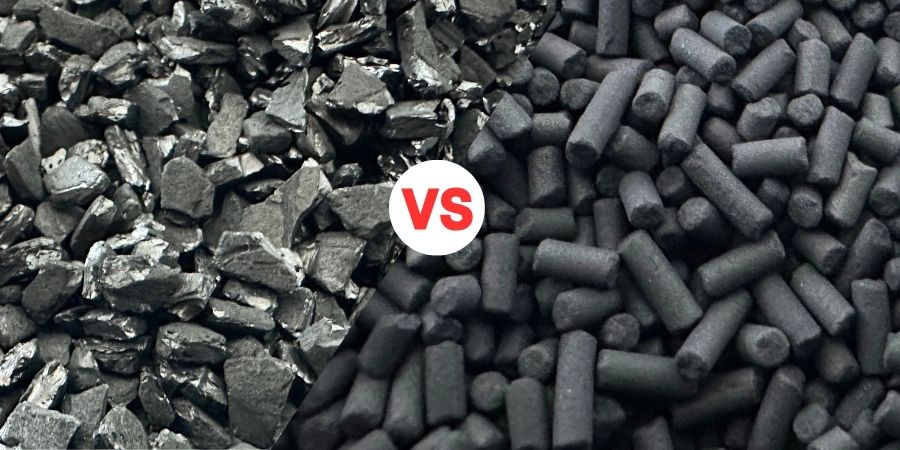Activated carbon is a multifunctional adsorbent material that is widely used in water treatment, air purification and industrial gas control. Depending on the specific use and performance requirements, activated carbon is classified into several types, with granular activated carbon and pelletized activated carbon being the two most common forms.
Although they differ in form, adsorption capacity and applications, both play important roles in their respective fields.This article presents a detailed analysis of the comparison between granular activated carbon and pellet activated carbon to help users choose the right product according to their specific needs.
What is Granular Activated Carbon?
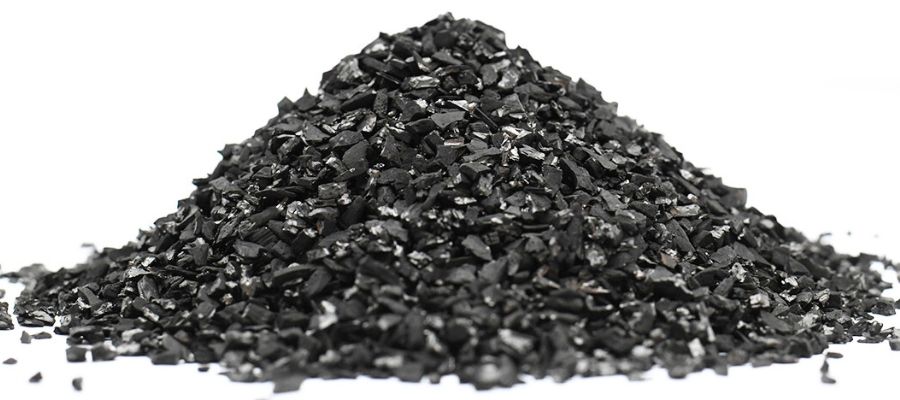
The granular activated carbon is usually rounded or irregular in shape and is produced from various carbonaceous materials such as coconut shells, charcoal, wood and other organic materials by physical or chemical activation. Granular activated carbon generally has a large specific surface area, which allows it to have a high contaminant adsorption capacity.
Production Method
The production of granular activated carbon is generally done by physical or chemical activation. Physical activation includes two stages: carbonization of the raw material and high temperature activation. First, the raw material (such as charcoal, wood, coconut shell, etc.) is heated in the absence of oxygen to 500-800 °C for carbonization.
It is then subjected to temperatures of 700-1100 °C with an activating agent, such as steam, carbon dioxide or air. Chemical activation involves mixing the feedstock with an activating agent (such as zinc chloride or phosphoric acid) and activating it directly at lower temperatures (400-700 °C).
Advantages and Disadvantages
Granular activated carbon is an important adsorbent material. Its advantages and disadvantages are presented below:
Advantages:
- Excellent adsorption capacity: Its large specific surface area makes it effective in water treatment and air purification.
- Long service life: GAC is suitable for long-term applications due to its regeneration capacity.
- Versatility: It is used in multiple areas, such as water treatment, air purification, gold recovery, food and beverage industry, among others.
Disadvantages:
- Low flow rate: The larger particle size makes the GAC less fluid, which can result in a slower treatment rate.
- Requires a deep bed: For large-scale applications, a deep carbon bed is required, which takes up more space.
Main Areas of Application
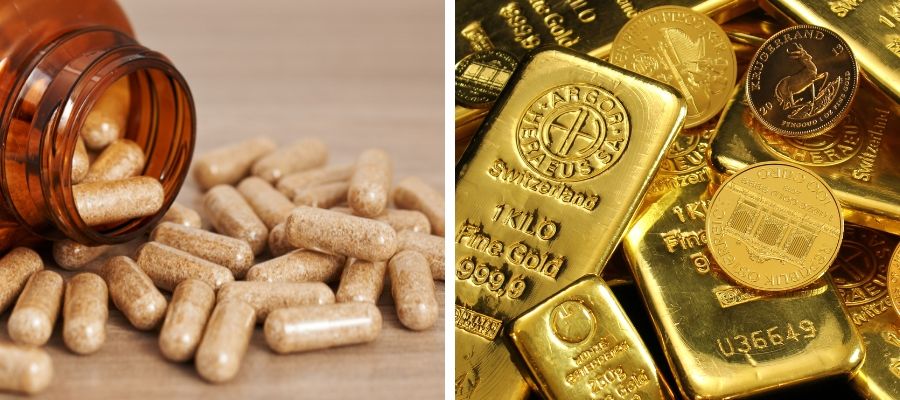
GAC is widely used due to its high adsorption capacity in various areas:
- Water treatment: To remove organic contaminants, odors and color.
- Air purification: For absorbing industrial gases and harmful substances in indoor air.
- Food processing: For decolorization, deodorization and purification.
- Pharmaceutical industry: To purify medicines and adsorb toxins.
- Metal recovery: For the recovery and purification of precious metals, such as gold.
- Catalytic applications: As a catalyst or support in various chemical reactions.
What is Activated Charcoal Pellets?
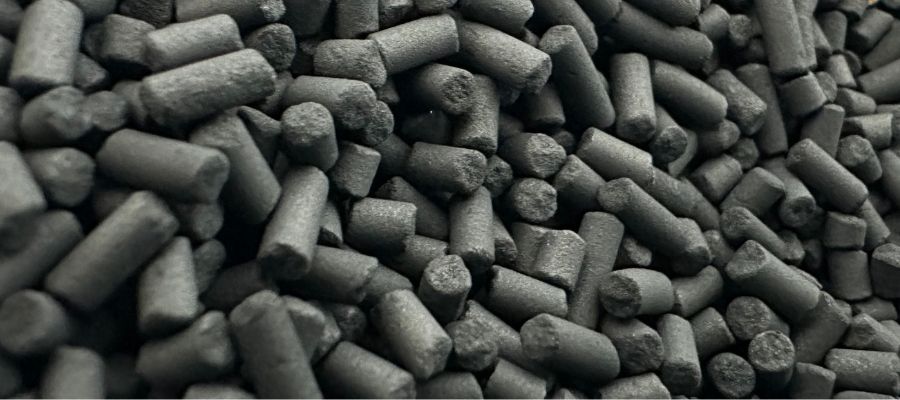
The pelletized activated carbon is obtained by compressing the activated carbon into cylinders of defined diameter and length. The pellet structure allows for higher adsorption efficiency at a given flow rate, making it ideal for applications requiring rapid treatment.
Production Method
The production of pelletized activated carbon includes raw material selection, carbonization, activation, molding, drying, screening, post-treatment and packaging. Initially, the porosity of the carbon is increased by carbonization and activation. The pellets are then shaped by compression or extrusion, followed by drying, screening and other necessary treatments to ensure product quality and stability.
Advantages and Disadvantages
Pellet activated carbon is a widely used adsorbent, and its advantages and disadvantages are as follows:
Advantages:
- High flow rate: The pellets are more fluid, allowing a higher flow rate during treatment.
- Good stacking density: In the same volume, the pellets can handle a higher flow rate, being more compact.
- Easy regeneration: Its shape allows for easier regeneration, either physically or chemically, prolonging its useful life.
Disadvantages:
- Lower adsorption capacity: Although efficient, its adsorption capacity per unit mass is generally lower than that of granular activated carbon, requiring more frequent replacements.
- Higher cost: Its production is more complex, which makes it generally more expensive than granular activated carbon.
Main Areas of Application
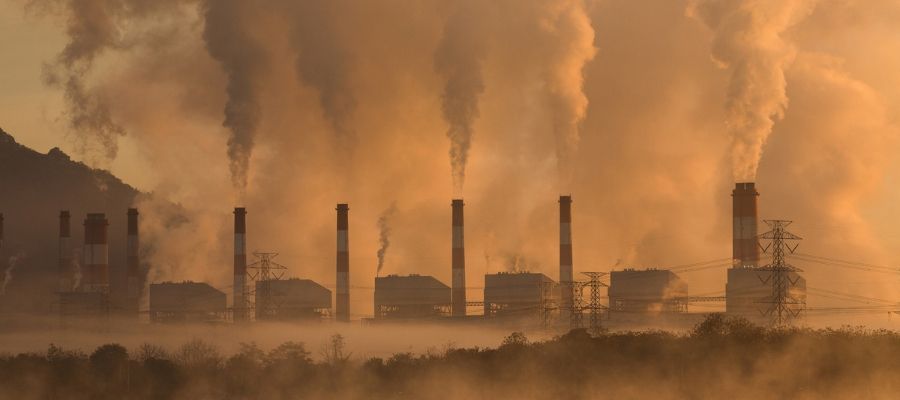
Thanks to its unique physical and chemical properties, pelletized activated carbon is widely used in various areas:
- Industrial gas treatment: Effective in removing harmful substances and odors in industrial gases, such as volatile organic compounds (VOCs), malodorous gases and hydrogen sulfide (H₂S).
- Air purification: It is effective in removing noxious gases, odors and pollutants such as formaldehyde, benzene and ammonia.
- Desulfurization and denitrification: To remove H₂S in gases such as biogas, coal gas, natural gas and chemical feedstock gases.
- Solvent recovery: It can adsorb and eliminate organic solvents, promoting the reuse of resources.
Comparative Analysis of Granular Activated Charcoal and Pellet Activated Charcoal
Granular activated carbon and pellet activated carbon are widely used as efficient adsorption material. However, there are some significant differences between the two in several aspects. A summary of their comparison is presented below:
| Feature | Granular Activated Carbon | Activated Charcoal Pellet |
|---|---|---|
| Form | Irregular particles | Cylindrical |
| Structure | More complex porous structure, larger surface area | Simpler porous structure, smaller surface area |
| Adsorption Capacity | Mayor | Menor |
| Useful Life | Longer | Shorter |
| Treatment speed | Slower | Faster |
| Use Scenario | Fluidized bed conditioner or suspended bed conditioner | Fixed bed conditioner |
| Application Scenario | Gas and liquid phase applications | Gas phase adsorption |
Conclusion
Granular activated carbon and column activated carbon each have their own advantages and the choice depends on the specific requirements of the application. Granular activated carbon is suitable for applications requiring high adsorption capacity and prolonged use, while column activated carbon is suitable for scenarios requiring rapid treatment or high flow rates.
Understanding the features and scope of application of both can help users make the best choice based on their actual needs. If you are looking for the right activated carbon solution for your purification needs, please contact contact with us and our team of professionals will attend to your diverse needs.
Frequently Asked Questions
Granular activated carbon is usually small particles of irregular shape, while pellet activated carbon is cylindrical. Granular activated carbon has a larger contact area during adsorption due to its irregular shape, while columnar activated carbon is easier to fill and replace due to its regular shape.
Granular activated carbon is commonly used in water treatment, air purification and other applications requiring high adsorption efficiency. Columnar activated carbon, on the other hand, is often used in gas purification and organic solvent recovery due to its stable structure.
Granular activated carbon is more suitable for water treatment due to its large specific surface area and microporous structure, which can effectively remove organic contaminants and chlorine from water.
Yes, pellet activated carbon is easier to replace and refill due to its regular shape and easier to automate.
Both can be thermally or chemically regenerated to restore their adsorption capacity, but specific regeneration efficiencies and costs may vary, depending on the type of activated carbon and conditions of use.
